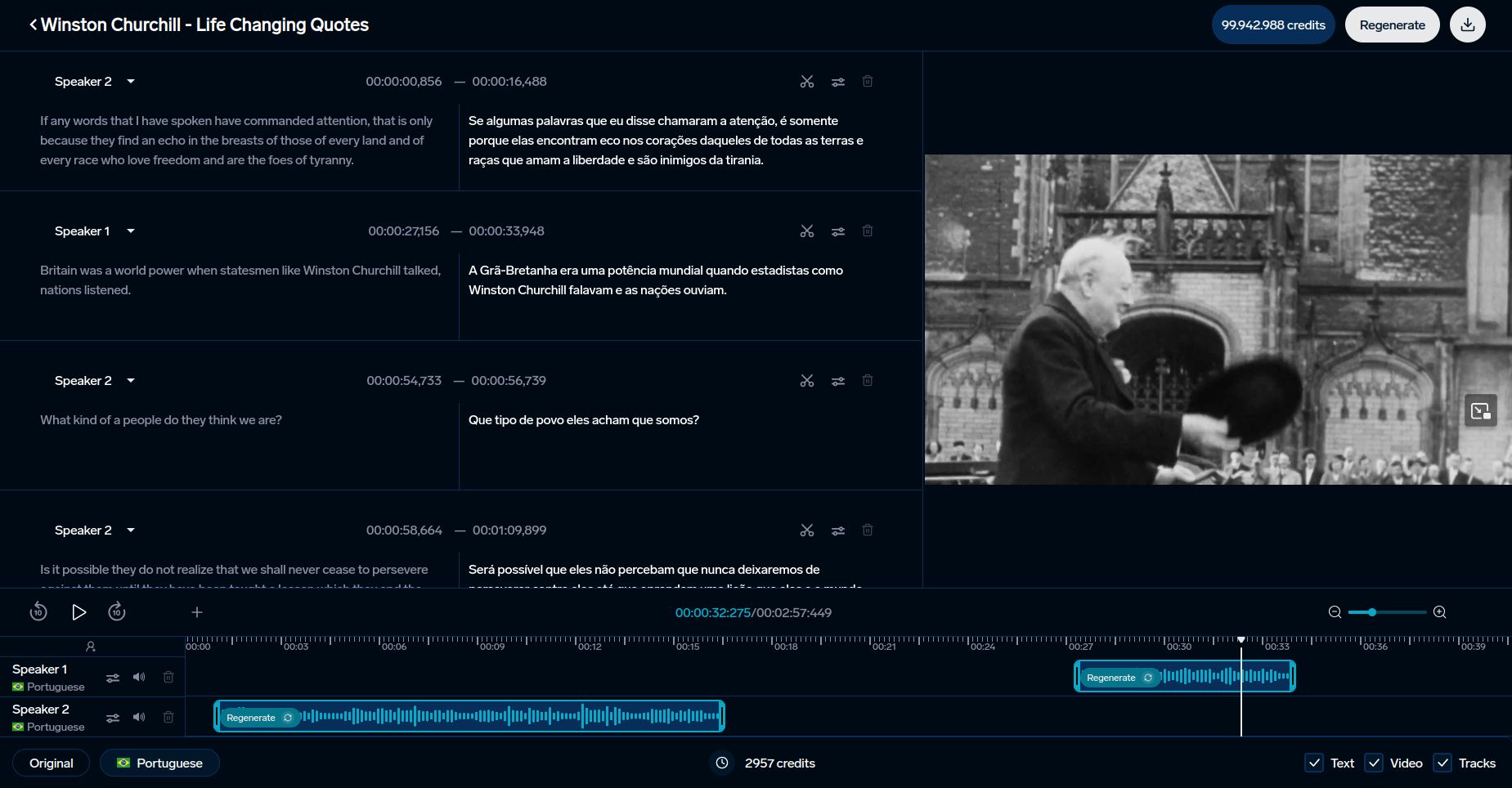 Read time ~6 min
Read time ~6 minHow AI Improves Real-Time Subtitle Accuracy
AI is transforming how subtitles are created, offering 96-97% accuracy in real-time speech recognition. This makes content more accessible for people with hearing impairments, non-native speakers, and global audiences. Here's how AI is reshaping subtitling:
- Real-Time Processing: Faster and more accurate transcription for live content.
- Context Understanding: Improved handling of accents, slang, and linguistic nuances.
- Multilingual Support: Supports over 70 languages.
- Efficiency: One-third of AI-generated subtitles require no edits, saving time for creators.
AI tools like DubSmart and AppTek leverage neural networks and context analysis to deliver precise subtitles, even for challenging accents and live events. While challenges remain, AI is making subtitles faster, more accurate, and globally accessible.
AI-Driven Speech Recognition Systems
AI-based Automatic Speech Recognition (ASR) systems are transforming spoken language into subtitles with impressive speed and accuracy, making them a game-changer for real-time transcription.
Neural Networks and Speech Recognition
Today's ASR systems leverage neural networks to analyze speech patterns, from individual sounds to entire phrases. This advanced processing allows for a deeper understanding of speech characteristics, resulting in highly accurate subtitles.
Context Analysis for Better Transcription
AI now goes beyond just recognizing words - it understands the context of conversations. This capability reduces common transcription errors that older methods often struggled with. For instance, professional subtitler Damián Santilli tested AppTek's system against Google's, finding AppTek delivered better results in 57% of cases across over 800 subtitles.
Key factors for subtitle quality include:
| Evaluation Criteria | Description |
|---|---|
| Segmentation | Breaking text into easy-to-read sections |
| Name Translation | Correctly transcribing proper nouns and place names |
| Treatment Style | Using the right tone, formal or informal |
| Special Cases | Handling tricky linguistic nuances |
This contextual understanding is also crucial for real-time translations, a standout feature of modern AI subtitling tools.
Real-Time Language Translation
Cutting-edge AI systems can translate speech into multiple languages in real time, all while keeping the meaning intact. For example, platforms like Google's Speech-to-Text and DubSmart enable instant translation into 33 languages, ensuring accessibility for global audiences.
These advancements address challenges such as handling diverse accents and processing speech in real time, making subtitling more efficient than ever.
AI and Real-Time Subtitle Generation
AI-powered subtitle tools are changing how we make content accessible and shareable worldwide. These tools use real-time processing to deliver captions that are fast, accurate, and easy to use.
Accessibility with Real-Time Subtitles
AI subtitle systems are a game-changer for audiences with hearing impairments or language barriers. By analyzing speech, tone, and even emotional cues, they enhance how people experience content.
| Content Type | Benefits of AI Subtitles |
|---|---|
| Live Streaming | Provides instant captions, allowing hearing-impaired viewers to engage in real time. |
| Educational Content | Offers multilingual support, helping non-native speakers learn more effectively. |
| Video Platforms | Automates captioning, making content easier to access for a wider audience. |
Global Reach with AI Subtitles
Studies show that AI can produce reliable subtitles without edits in about one-third of cases, saving creators time and effort.
This technology also makes it easier to share content with global audiences by offering several standout features:
| Feature | How It Helps |
|---|---|
| Real-Time Translation | Supports over 70 languages, making content instantly accessible worldwide. |
| Context Analysis | Delivers 57% better accuracy in tests compared to traditional methods. |
| Automated Processing | Boosts productivity by up to 37%, streamlining the workflow for creators. |
Tools like DubSmart excel at delivering accurate, multilingual subtitles without losing context. This is especially useful for schools, universities, and media companies aiming to connect with diverse audiences globally. Plus, these tools integrate smoothly with streaming platforms, ensuring a seamless user experience.
That said, challenges like handling various accents and meeting the demands of real-time processing still need creative solutions. AI has come far, but there's room for improvement.
sbb-itb-f4517a0
Overcoming Subtitling Challenges with AI
Tackling Accents and Slang
AI-powered systems rely on machine learning to handle accents, slang, and regional expressions effectively. By analyzing context and learning over time, these tools improve their ability to provide precise transcriptions, no matter the speaker's style.
| Challenge | AI Approach | Outcome |
|---|---|---|
| Regional accents, slang, and local expressions | Context-aware recognition and continuous updates | Better transcription for different dialects and languages |
| Real-time demands | High-speed processing capabilities | Quick and accurate subtitles for live content |
"Our AI engines have been trained specifically on subtitling data from massive libraries of transcribed and translated media subtitle files as well as other language data", says Dr. Volker Steinbiss, Managing Director at AppTek.
Tests show that AI can produce ready-to-use subtitles immediately in about one-third of cases.
Speed for Real-Time Needs
AI subtitle systems use cutting-edge computing to meet the demands of live transcription. By combining fast processing with smart error correction, these systems ensure subtitles are accurate and stay in sync with live content.
Platforms like OOONA, Stellar, and SubtitleNEXT now incorporate AI models to ensure both speed and precision. These tools are particularly helpful for live streaming and broadcasts, where timing and accuracy are critical.
Improvements in both speed and precision are helping AI tools align with the needs of today’s content creators.
AI Tools for Subtitle Generation
AI is tackling subtitling challenges like accents and rapid speech, making subtitle creation faster and more precise. Several tools now simplify this process by using advanced machine learning to manage even the trickiest tasks.
DubSmart: Subtitle and Dubbing Solutions

DubSmart blends speech recognition, voice cloning, and support for over 70 languages to simplify subtitle creation for creators worldwide. It works with YouTube and local uploads, offering flexibility for different workflows. Plans start at $19.90 per month, with options for enterprise-level users who need to handle larger volumes.
Other AI Platforms for Subtitles
DubSmart isn't the only player in the game. For example, Syntetica integrates with media production workflows, offering fast and accurate subtitles tailored for the entertainment industry. This makes it a go-to choice for media companies.
These tools are reshaping how subtitles are created, ensuring content is more accessible and accurate for global audiences. By handling various accents and languages with precision, they are becoming essential for modern content creators.
Conclusion: AI's Impact on Subtitling
Key Points
AI has reshaped how subtitles are generated in real-time, offering improved accuracy and speed. For example, AppTek's models outperformed general tools like Google Translate in 57% of cases when processing over 800 subtitles.
This technology excels in handling a variety of accents, languages, and real-time demands, making content accessible to audiences worldwide. While these advancements are impressive, the question remains: where will this technology go next?
Future of AI in Content Creation
AI's role in subtitling is set to grow, with efforts aimed at improving precision and flexibility. By leveraging specialized training on vast subtitling data libraries, these systems are becoming increasingly capable.
Neural networks and deep learning are already boosting transcription accuracy, while developments in language processing and context analysis are enhancing real-time performance. As AI continues to progress, we can anticipate tools that adapt even better to different platforms and audiences, delivering higher levels of accuracy and usability.
These advancements will be especially impactful for live subtitling, further breaking down barriers and broadening access for content creators and viewers everywhere.